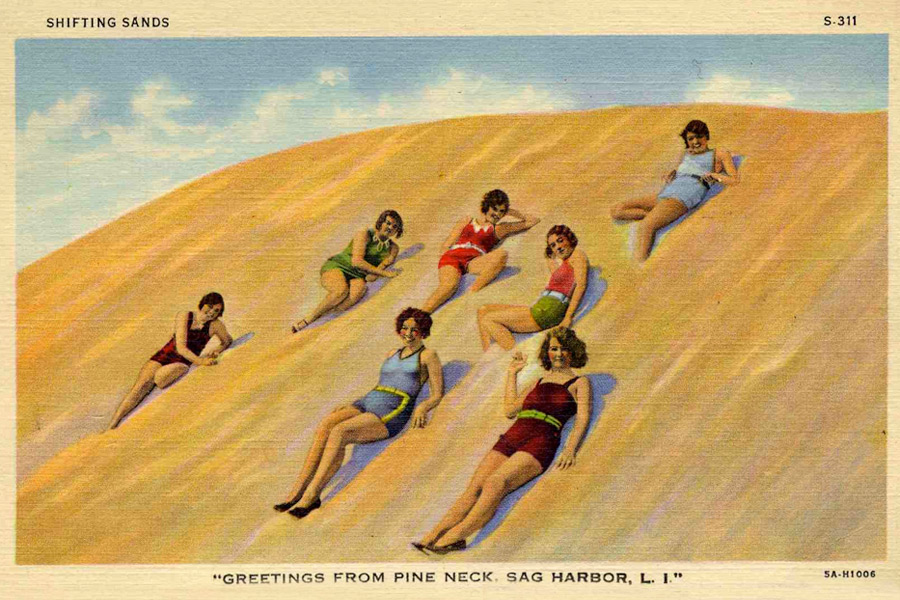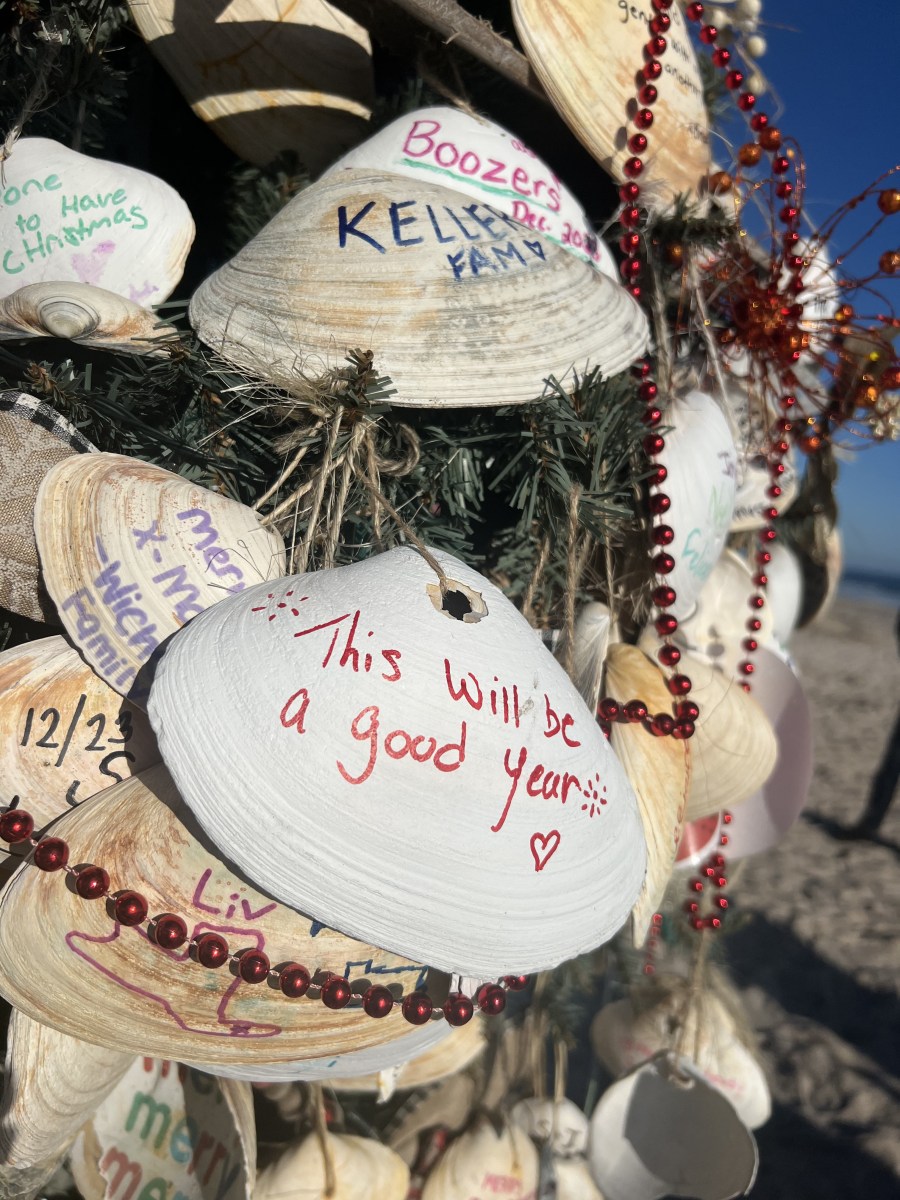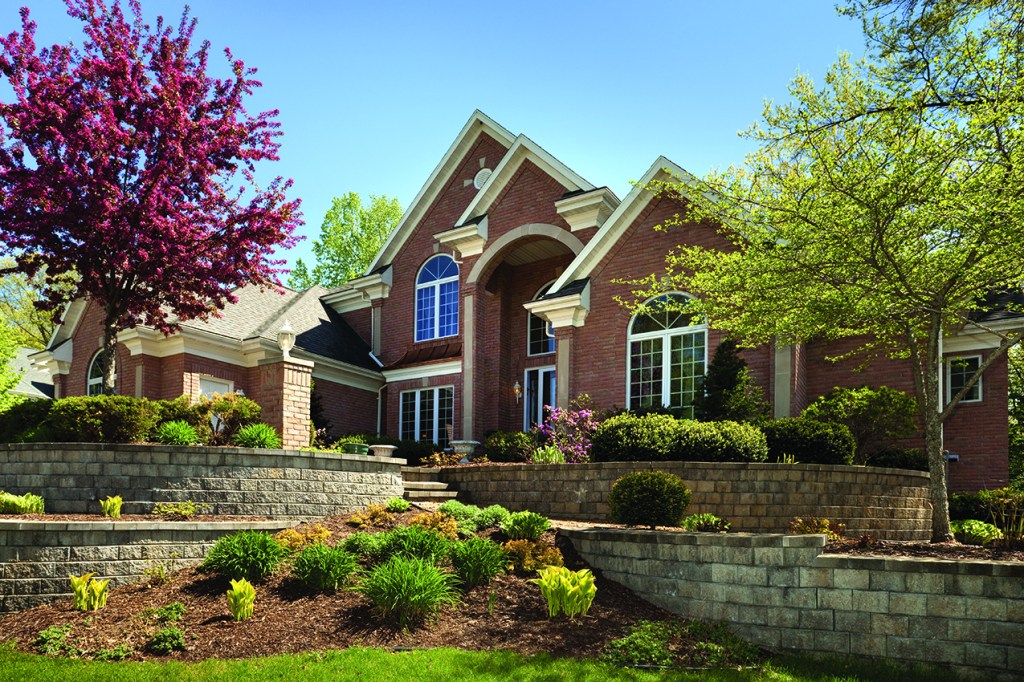Historic Postcards Tell Story of the East End

Eric Woodward has a passion for postcards. The Southampton residential architect has been collecting postcards for the past 30 years. He has over 40,000 cards in his collection, many of which are European cards that belonged to his grandmother. What really intrigues are the 4,000 pictures of the Hamptons, and our traditional style Long Island homes in particular.
Woodward’s interest was sparked when he was browsing in an antiques store and came upon a postcard of Southampton from 1905. Having moved to Southampton in 1976, he was taken with the image, and his vast collection got its start. Woodward buys at the annual Long Island Postcard Collectors Show and Sale every spring in East Northport, where postcards are piled high on seven to eight tables for all to peruse.
Nowadays, the marketplace for cards is mostly online, with eBay being the best place to trade rare and valuable ones. Postcards sell individually for $5 to $10. By those numbers, Woodward’s entire collection would be worth anywhere between $200,000 and $400,000. Often there are bidding wars online, with prices going up to as much as $40 for a rare or desirable image. Recently, Woodward went on a cross-country bicycle trip and was able to snag a card of a house in Sagaponack from his smartphone while on the road.
Why are these postcards so rare and desirable? They are so collectable because of their unusual history in a very limited timeframe. Between 1904 and 1914, there was a “postcard craze” for sending and receiving cards in the mail. All of these artifacts are postmarked with the date on which they were sent. Woodward says that he has seen that some people received four to five postcards per day in the mail!
Woodward is always on the lookout for images of houses, as some of these pictures are the only views made of historic houses that were destroyed or that don’t survive intact. There was one image he sought out for years that was of a house by McKim Mead and White on the ocean that washed away in 1938. He had seen an engraving of the residence, but no pictures existed of the home. Finally, after years of being on the hunt, he found a postcard of it.
These historic postcards come in two types: lithograph and photograph. Those that are actual photographs printed on a card come at a premium price. They are usually very good images. For the lithographs, salesmen would come to town and offer to print local postcards to sell in news stores. The postcards would be printed in Germany, where the printing technology for lithographs was much more advanced than in the United States.
Photography at this time was getting more simplified so that it was possible for the average person to have a darkroom at home. Some people would take the photographs themselves and print them in their own darkrooms, making the images in small batches. One prized series is a group of pictures of a snowstorm on Elm Street in Southampton printed by someone who lived on the street.
Woodward has gotten creative with some of the photographs in his collection and has hand-tinted the black-and-white images to add color. He keeps the collection in albums and is always ready to show them off to visitors. Woodward gives illustrated talks featuring highlights from his collection at area historical societies and libraries periodically, this local architect to share a visual understanding of the history of this special place.
Check out some vintage East End postcards from Woodward’s collection below.
[widgetkit id=83187]



